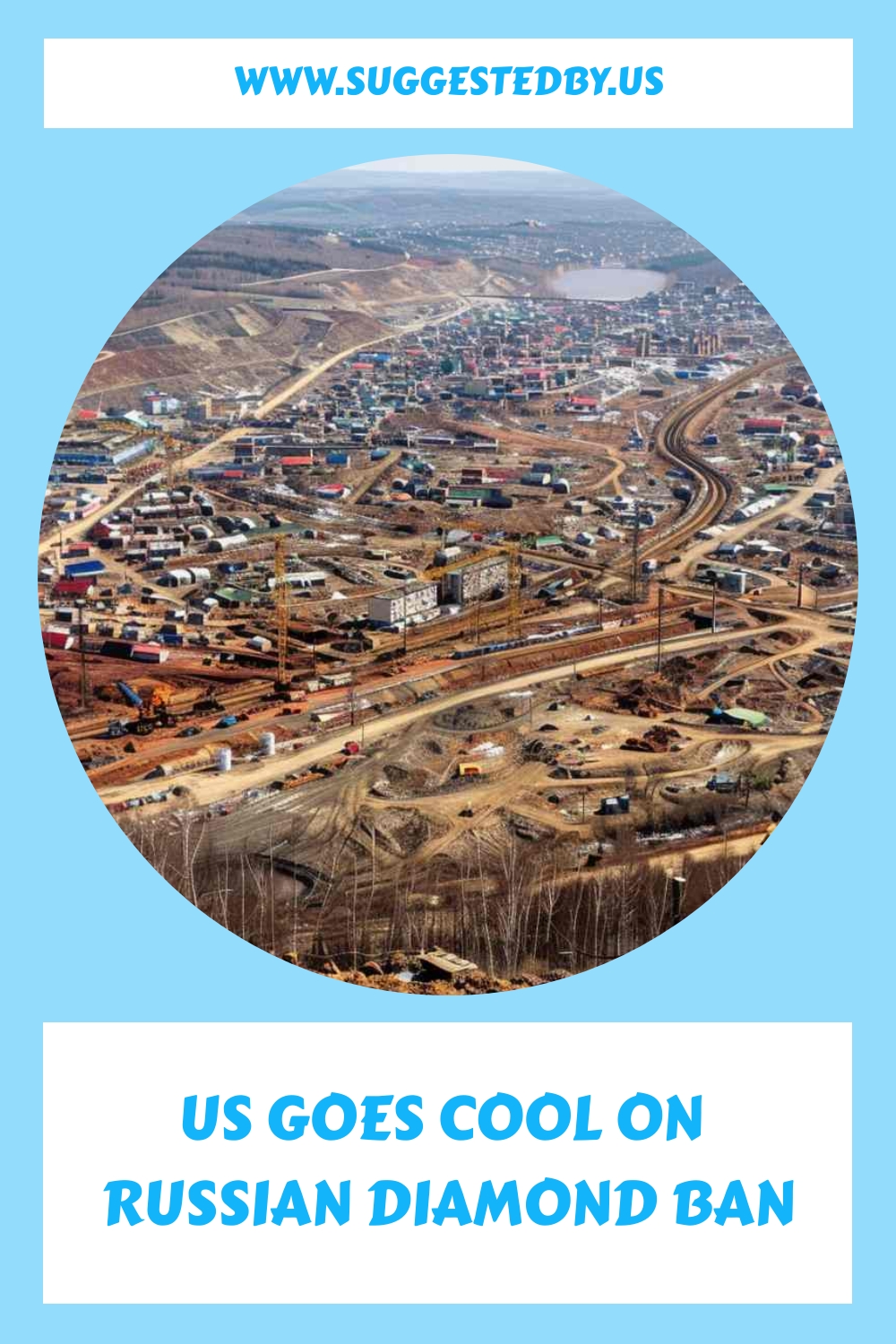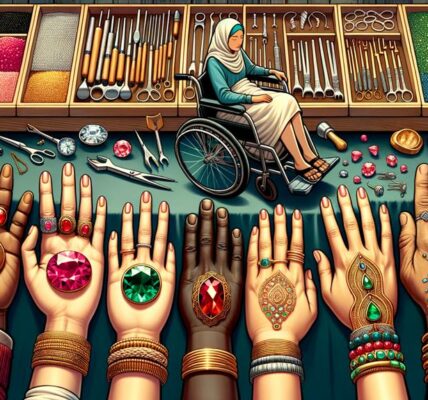Article Contents
TL;DR
The US stance on the G7 Russian diamond ban reflects a cautious approach towards addressing the complexities of the diamond industry and international relations. The ongoing reevaluation underscores the importance of balancing economic, geopolitical, and industry interests for a sustainable solution.
The recent developments surrounding the G7’s sanctions on Russian diamonds have stirred controversy within the diamond industry. As the US evaluates its position amidst opposition from various stakeholders, it’s crucial to understand the implications of this reevaluation.
US Reevaluation of G7 Ban
As we explore the nuanced topic of the US reevaluation of the G7 ban on Russian diamonds, it is crucial to understand the various dimensions at play. Let’s break down the key points that have been circulating in recent discussions.
Overview of the G7 sanctions on Russian diamonds
The G7’s decision to impose a ban on Russian diamonds was a significant move aimed at curbing another revenue stream for Russia amidst the ongoing conflict in Ukraine. This ban, part of a broader sanctions package, has had far-reaching implications within the diamond industry. With the European Union already enforcing the ban, the discussions have raised crucial questions about the effectiveness of such measures. The G7’s decision to impose a ban on Russian diamonds has led to concerns within the diamond industry about the potential impact on supply chains and global diamond prices. Additionally, the EU sanctions on Russian diamonds have prompted discussions about the feasibility of alternative sources for diamond supply and the potential for increased demand for lab-grown diamonds. The ongoing debate highlights the complexities of enforcing sanctions in a globalized market and the need for careful consideration of the wider economic impact.
US stance on the ban and recent developments
The United States, a key player in the G7, has recently been under scrutiny for its lukewarm approach towards the ban. Despite initial support for the sanctions, opposition from African countries, Indian gem polishers, and New York jewellers has prompted a reevaluation of the stringent controls. The Biden administration remains engaged in talks but has shown signs of disconnect from certain aspects of the ban, leading to a reexamination of the implementation strategy.
Factors influencing the US reevaluation
Several factors have contributed to the US reconsideration of the G7 ban. Concerns from African partners, Indian and UAE stakeholders, and the need to align industry interests have posed challenges to the seamless implementation of the sanctions. The debate surrounding the traceability mechanism, particularly in the context of Antwerp as a certification hub, has revealed divergent viewpoints within the G7 countries.
Stay tuned for further updates on how these deliberations unfold and impact the global diamond trade landscape.
Industry Concerns
Looking deeper into the industry concerns surrounding the proposed ban on Russian diamonds, a myriad of issues emerge, shedding light on the complexities and implications of such a significant decision. The voices of opposition resonated from diverse corners of the globe, ranging from African countries to Indian gem polishers and even New York jewellers. This collective resistance underscored the far-reaching impact of the ban and the challenges it presented.
Opposition from Various Stakeholders
African nations, known for their significant diamond production, voiced strong opposition, highlighting their concerns about the ban’s effects. Similarly, Indian gem polishers, known for their exceptional craftsmanship, expressed concerns about the ban’s potential to disrupt their longstanding trade networks and practices. Moreover, New York jewellers, synonymous with luxury and elegance, articulated their reservations about the ban’s impact on the availability and pricing of diamonds in the market.
Challenges in Implementation
The implementation of stringent controls and traceability mechanisms emerged as a major hurdle in enforcing the ban effectively. Despite the noble intentions behind the regulations, the practical challenges of ensuring compliance and monitoring the entire supply chain posed significant obstacles. The need for a cohesive and comprehensive framework that addresses these challenges while balancing economic interests and ethical considerations became increasingly apparent.
Impact on the Diamond Market and Industry Dynamics
The impending ban on Russian diamonds had already sent ripples through the diamond market, stirring uncertainty and speculation among industry players. The potential consequences of disrupting established trade routes and supply chains reverberated across the industry, raising questions about the market stability and future dynamics. The intricate web of relationships and dependencies within the industry faced the imminent threat of restructuring and realignment in response to the ban.
Global Implications
Reflecting on the repercussions of the recent G7 ban on Russian diamond exports, the ban has a profound impact on various facets of the diamond trade and international relations. Let’s delve into the ban’s effect on Russia’s revenue from diamond exports, the significance of traceability and certification in the diamond trade, and the international community’s response.
Effect of the Ban on Russia’s Revenue from Diamond Exports
The decision by the G7 countries to ban Russian diamond imports represents a significant move aimed at diminishing a crucial revenue stream for Russia amidst the ongoing conflict in Ukraine. Despite diamonds constituting a small fraction of Moscow’s overall profits, derived mainly from oil and gas, the ban underscores a strategic economic pressure point.
Since the implementation of sanctions on Russian diamonds, requiring importers to ensure diamonds are not of Russian origin, the diamond industry has witnessed a notable shift. The ban poses challenges for Russian miners and has raised concerns about the potential circulation of Russian diamonds through alternative channels, highlighting the importance of robust enforcement mechanisms.
Importance of Traceability and Certification in the Diamond Trade
The G7 ban has increased the emphasis on traceability and certification in the diamond trade, signaling a crucial moment for ensuring transparency and accountability in diamond sourcing. The mandate for diamonds of a certain carat threshold to undergo traceability certification using blockchain technology in hubs like Antwerp underscores the industry’s commitment to ethical practices.
While the discussions on traceability mechanisms have faced hurdles, particularly concerning the involvement of key industry players and respecting the concerns of African and UAE partners, the focus on certification at the source is crucial for maintaining the integrity of the global diamond market. Addressing challenges related to transparency and preventing illicit trade necessitates a collaborative approach among stakeholders.
International Response to the G7 Ban and US Reevaluation
The response to the G7 sanctions on Russian diamonds has been met with a spectrum of reactions, with the United States undergoing a reevaluation of the stringent controls initially proposed. Concerns raised by African nations, Indian gem polishers, and industry representatives have prompted a reconsideration of the ban’s implementation to strike a balance between economic impact and feasibility.
The international community’s engagement with the ban reflects a complex interplay of economic interests and geopolitical considerations. The evolution of the ban and the US stance underscore the intricate dynamics shaping global trade policies and underscore the significance of diplomatic dialogue in addressing contentious issues.
In conclusion, the repercussions of the G7 ban on Russian diamond exports extend beyond economic realms, transcending into the realms of ethical sourcing, international cooperation, and industry sustainability.
Conclusion
Reflecting on the intricate discussions and developments surrounding the G7 sanctions on Russian diamonds, it is evident that the United States is navigating a complex landscape of international relations and industry interests. The reevaluation of the stringent measures within the ban indicates a thoughtful approach towards balancing geopolitical considerations and economic impacts.
The ban, initially designed to limit a significant revenue source for Russia amidst the ongoing conflict in Ukraine, has encountered opposition from various stakeholders. The involvement of African nations, Indian gem polishers, and New York jewellers has underscored the multifaceted nature of this issue.
Looking ahead, the future of the diamond industry and geopolitical relations appears to be intertwined with the outcomes of these deliberations. The discussions on implementing traceability mechanisms and the challenges posed by differing perspectives highlight the complexities of regulating a global market.
As we ponder on the implications of the ongoing reevaluation, it becomes clear that finding a nuanced solution is crucial. The need to strike a balance between exerting pressure on Russia and ensuring the feasibility of the ban requires careful consideration of diverse concerns and interests.






